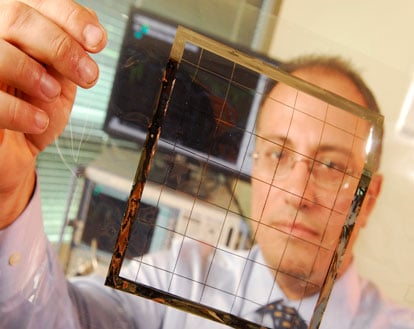
Researchers at the Georgia Institute of Technology have developed a method to capture and harness the electromagnetic energy emitted by radio and television transmitters, cell phone networks and satellite communications that could someday lead to self-powering electronic devices.
“There is a large amount of electromagnetic energy all around us, but nobody has been able to tap into it,” lead researcher Manos Tentzeris, a professor in the Georgia Tech School of Electrical and Computer Engineering, said. “We are using an ultra-wideband antenna that lets us exploit a variety of signals in different frequency ranges, giving us greatly increased power-gathering capability.”
Using inkjet printers to combine sensors, antennas and “energy-scavenging capabilities” onto paper and flexible polymers, the research team developed self-powered wireless sensors that could be used in a variety of applications, including defense and industry, manufacturing and shipping, telecommunications and the power industry.
According to the research team, the energy-capturing technology converts captured energy from AC to DC and stores it in capacitors and batteries for later use. In a demonstration of the technology, researchers successfully operated a temperature sensor using electromagnetic energy captured from a television station located half a kilometer away. Other scavenging experiments conducted using TV bands reportedly captured energy equivalent to “hundreds of microwatts.” Researchers expect multi-band systems to generate at least one milliwatt—enough energy to operate small electronic devices such as sensors and microprocessors.

Devices requiring more than 50 milliwatts could also potentially be powered using the energy-scavenging technology in combination with super-capacitors and cycled operation.
According to the team, the scavenging device is currently capable of capturing energy from the frequency range of 100 MHz to 15 GHz.
However, by adding a “unique in-house recipe containing nanoparticles and/or other nanoparticles in an emulsion” to the printing materials, the team also demonstrated the ability to print higher-functioning electrical components and circuits.
“We can print circuits that are capable of functioning at up to 15 GHz to 60 GHz if we print on a polymer,” graduate student Rushi Vyas said. “So, we have seen a frequency operation improvement of two orders of magnitude.”






